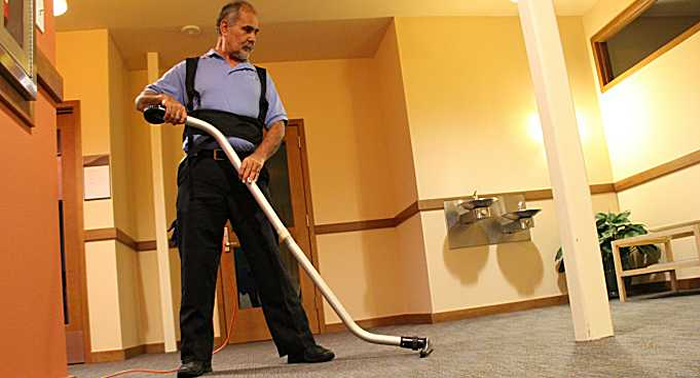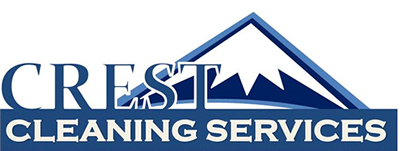

Federal Way Janitorial Services
Overview of Our Professional
Federal Way Janitorial Services
Your particular home or office is unique, and because of this you need personalized attention from the Federal Way janitorial services company you choose. From washing windows to cleaning floors and carpets, attention to detail is at the heart of how we approach every janitorial service Tukwila based job.
Attention to detail is vital when it comes to selecting Federal Way janitorial services, because the little things are always what stand out most when you have guest over to your home or clients meeting at your workplace. Our Federal Way janitorial service experts are experienced in variety of cleaning services that include:
- Carpet Cleaning Service – We deep steam clean carpets according to manufacturer’s recommendations
- Commercial & Industrial Floor Buffing Service
- Commercial & Industrial Floor Stripping Service
- Commercial & Industrial Floor Waxing Service
- House Cleaning
- Office Cleaning & Federal Way Janitorial Service
- Pressure Washing Service
- Window Cleaning Service
Crest Federal Way Janitorial Services Experts
You’re Federal Way office building or retail space must be clean if you are to be successful in the marketplace. When you hire a professional Federal Way janitorial service based company to keep your office space neat and clean, you shouldn’t even be aware that it’s been cleaned when you first walk in the door in the morning. We believe that the best endorsement of our janitorial care is when our Federal Way clients notice that cleaning has even been done.
Worry free Federal Way janitorial services is what we do best at Crest Janitorial Services. Contact us today at (206) 902-0427, schedule a service appointment, and give us a try. We are certain that you won’t be disappointed in our professional Federal Way based janitorial company, or the quality of our service.

About Federal Way WA
Federal Way is bordered on the south by Pierce County and on the west by Puget Sound and is located in the southwest corner of King County. Although in recent years, the community has seen explosive development and growth, it was a rural community for much of its early history. The Federal Way Highway is the namesake of the community.
The Native Indians who lived next to the Green and White Rivers to the east used the region for seasonal campgrounds, although there were no Indian settlements in what is currently known as Federal Way. They would catch clams and smoke them to preserve them for transportation during the clam season. In 1792, many native Indians came to shore to greet Captain George Vancouver, when he explored the region.
As early as 1824, the explorers from the Hudson Bay Company might have traveled through the region. They opened a small trading post next to an Indian trail that traveled south and north in 1840. Throughout the history of Federal Way, this trail would have a long legacy.
Between Fort Bellingham and Fort Steilacoom, a survey was made for a road to be constructed in the early 1850’s. In many regions, existing trails were used, including the one in what is currently known as Federal Way. It was called Military Road because the road was built for use by the military. The road was completed between Seattle and Pierce County by 1860.
Many early pioneers decided to file claims close to Tacoma or Seattle at that time. The first homesteader didn’t relocate to the general region of Federal Way until 1871. A man named Sam Stone established his homestead at what is currently known as Redondo, which was then known as Stone’s Landing. The bay was called Poverty Bay around this same time.
The first schoolhouse was constructed close to Star Lake in 1860 and other pioneers started relocating close by. A man named Jacob Reith helped to construct a road made from split logs in what later became known as Reith Road. A man named Arthur Steele settled around a body of water that is currently known as Steel Lake. Small communities including Adelaide and Buenna had their own schools constructed. A man named Taylor Web relocated to the location that is currently known as the SeaTac Mall in 1890. Some local residents still call the region Webb Center.
In this remote rural location, most families had small farms. Although the region remained primarily undeveloped for many years, some sawmills were constructed on the small lakes. The first store wasn’t established on Stone’s landing until 1904. A man named Charles Betts owned the store.
After crowding onto to await a steamer, a dock collapsed and killed 13 people in 1906. Mr. Betts suggested that the community change its name to Redondo because he was worried about the stigma from the disaster. Some were in hopes that the region would become a recreational location much the same as Redondo Beach in California. A skating rink, dance hall, and bowling alley were built in In just over ten years.
Talk of a new highway started that would be routed across the whole western coast of the US with the onset of the automobile age. In 1915, construction was started and federal funding was provided to pave the road between Tacoma and Seattle in 1925. Much of the new highway ran parallel or overlay Military Road and was designated U.S. 99. In 1928, the section between Tacoma and Seattle officially opened.
There were eight school districts in the region by this time, including Star Lake, Lake Geneva, Harding, Lakota, Adelaide, Buenna, Redondo, and Woodmont. It was determined that they should all be consolidated into one school district in 1929. The first elementary school constructed was named Federal Way School and was built adjacent to the federal highway. The school district was also named Federal Way.
However, development was hindered by WW II and the earlier Great Depression although the community now had a major thoroughfare. The region remained rural until after the end of the way other than restaurants and some gas stations. The first major business in Federal Way was Marckx’s Farm store, which opened in 1945 next to highway 99. Soon, others followed.
The predecessor to the Federal Way Chamber of Commerce, known as the Federal Way Commercial Club was established in 1946. The community had its own newspaper, known as the Greater Federal Way News a few years later.
Travelers up and down the West Coast as well as residents of King County were using Highway 99 by the 1950’s. There were many different motels, which offered a temporary stopover for weary travelers as well as restaurants including Les’s In and Out Hamburgers, Rocky’s Drive IN, and Rose’s Hi-Way Inn, which provided tasty meals for the traveler who was hungry traveler.
Consumers greeted the opening of the Federal Way Shopping Mall with enthusiasm in 1955. The mall also became home to a collection of historical artifacts and old cabins called the Old Line Historic Park, the European reproductions of the Old World Square, and the amusement rides of the Santafair in addition to being the only shopping mecca in the region. There were an additional 160 acres purchased for the venture in 1961. Some years later a narrow gauge railroad was constructed around the
In 1961, 160 additional acres were acquired for the venture, and a few years later a narrow gauge railroad was built around the mall as a ride. However, the owners started to have legal problems. Although, they were eventually cleared of all charges, they were charged with 29 counts of conspiracy and fraud and filed for bankruptcy.
One mile east of Highway 99, Interstate 5 was opened in 1962. The community experienced more development as a result. In 1964, the Century City complex was completed and in 1965, the Twin Lakes housing development started selling homes. The Weyerhaeuser Corporation started construction on its corporate headquarters in Federal Way as new schools were being constructed.
Although it was voted down overwhelmingly, in 1971, an attempt to incorporate Federal Way as a city was made. Without any success, attempts were also made to incorporate in 1981 and 1985. Although it was in disrepair, the Federal Way Shopping Mall was bought by the Teratron Company. In 1975, the SeaTac Mall opened. During the first week, almost 20,000 people visited this new mall. In 1976, across the street, the SeaTac Village Shopping Center was completed.
The community experienced continued development and growth all through the 1980’s. Business campuses and condominium complexes started sprouting up all through the community. Those seeking recreation were lured to the area by the many different county parks as well as Enchanted Village, with its Wild Waves Swimming Pool.
The year 1990 finally brought the incorporation of Federal Way as a city. The Sportsworld Lane bowling complex was where the official act of incorporation was held. Also in 1990, Federal Way received worldwide recognition when the Goodwill Games diving and swimming events were held at the new Weyerhaeuser Aquatics Center.





